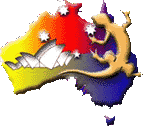|
     |
Howard led the Liberal/National Coalition to defeat in the 1987 election, being hampered by the disarray in the Opposition ranks following the attempt of Queensland National Party Premier Joh Bjelke-Petersen to enter federal politics, some campaign errors including a financial miscalculation on the costing of promises, and doubts in the minds of voters about his conservative policies. In the immediate election aftermath he staved off a leadership challenge from Andrew Peacock but was defeated by Peacock in a 1989 challenge. He became shadow Minister for Industry, Technology and Commerce in 1989 and shadow Minister for Industrial Relations, Employment and Training in 1990. In 1995, after the Coalition had lost two more elections to Labor and had moved from Peacock, to John Hewson, to Alexander Downer as leader, Howard once again regained the Liberal leadership. The short-lived leadership of Downer had not proved viable, Peacock, Howard's old enemy, had left politics and the party turned to Howard as one of its most experienced and able performers, with the strong parliamentary debating skills needed to be any match for Prime Minister Paul Keating. He set about reforming his image from the 1980s, which was one of a right-wing economic rationalist and social conservative, softening his stance on some industrial relations issues and his opposition to the republican movement, while building on the favourable side of his image-as a down-to-earth, honest, ordinary Australian man with strong family values. Basing his 1996 election campaign on issues that extensive Liberal Party research had shown to be uppermost in voters' minds, Howard led the Coalition to a landslide victory over the Keating Labor Government. His policies included: industrial relations reform based on an increase in enterprise bargaining and productivity-related wage rises; reform of the laws relating to unfair dismissal as an aid to small business; reduction of the Budget deficit; the re-opening of the east-west runway at Sydney Airport to distribute more widely increased noise since the opening of the third runway; redirection of reconciliation with Aboriginal and Torres Strait Islander people towards improving health, education and housing while retaining the bulk of the Native Title Act; sale of the remaining part of the Commonwealth Bank owned by the government; sale of one third of Telstra to fund an extensive environmental package; maintenance of strong relations with countries of the Asia-Pacific region. The republican issue seemed not to be on the short-term agenda. Howard's regaining of the Liberal leadership and his eventual gaining of the prime ministership revealed him to be a politician of remarkable resilience-in his own words, "Lazarus with a triple by-pass". Copyright unknown
|
|
|
|
[ Virtual
Australia | The
World We Live In | The
Things We Do ]
Problems/Broken Links can be reported
to
All text and
graphics unless otherwise stated are ©1998-2000 Kim Holden, Virtual Australia.
|

![[Visit Oska]](../../images/oska003.gif)
